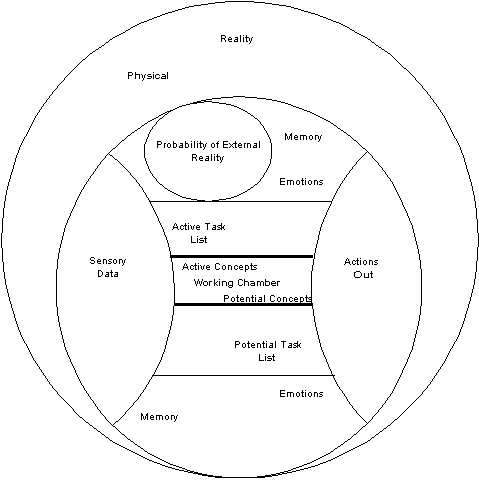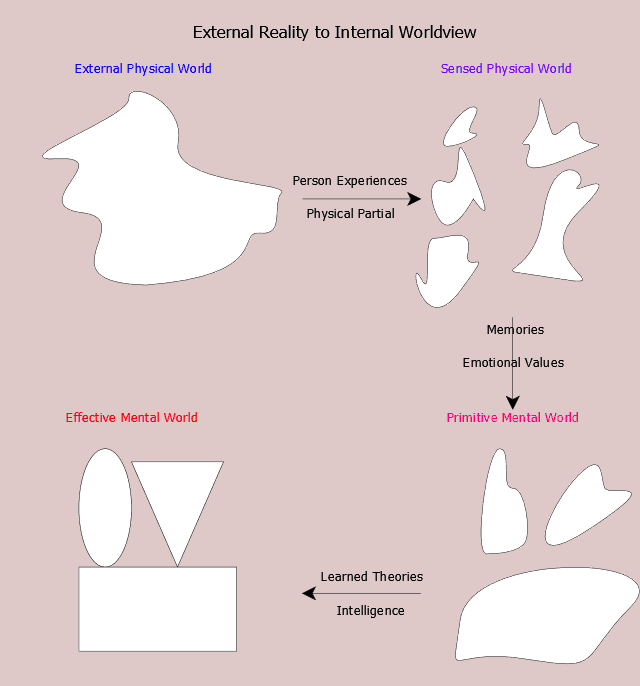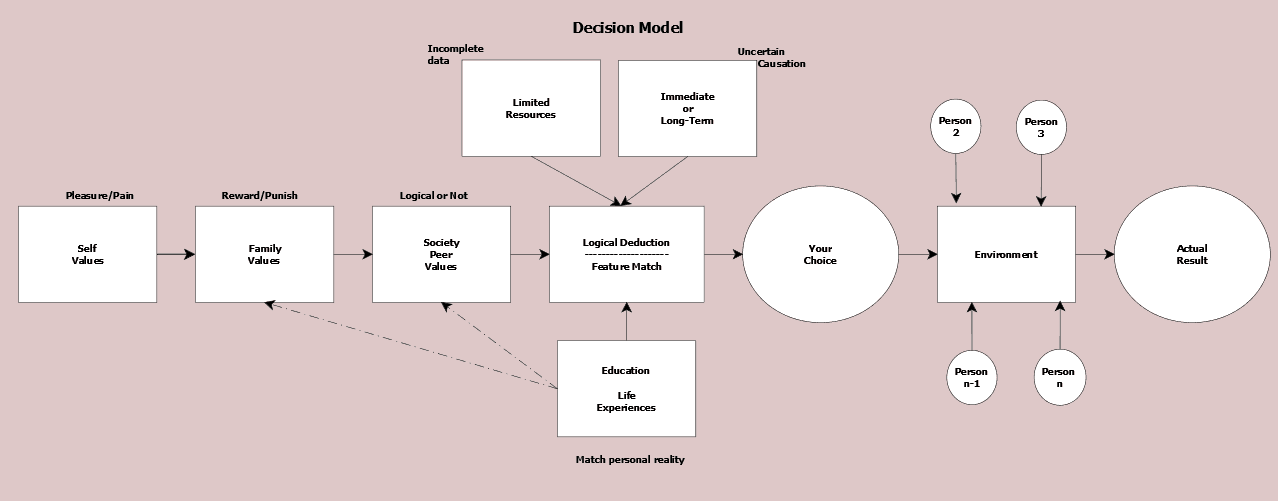Below is a section of an essay I wrote in the mid ‘80s. It shows a descriptive approach to the difference between external flux and internal stability.
Following that, I use the neural concepts to explain the functionally that underlies the descriptive statements.
I share an interest with many of you – the mind. Lately, I’ve been exploring a set of ideas that bear on how the human mind works. The wellspring of my interest is the difference between the flux of external reality and the stability of internal reality.
Plato had his Ideals and in various forms they have resurfaced in philosophers’ hands through the ages. The following interpretation of reality shows an aspect of ideals that reinvigorates their power.
Original Perspective
External objective reality is only partially observed by any particular person. This means that a person’s internal reality originates with the set of incomplete data the person observes. This data is enhanced in several ways.
- Generative completion of missing data.
- Elimination of contradictory data
- Idealization of data
This set of idealized data is stored as a set of active concepts that a person uses to decide his actions on. These concepts have their source in the real, external world but they are quasi-permanent and idealize reality.
Mental Construction
Overall, Mental Construction develops an explanation of abstraction, arising from neural properties, which leads to internal operations with less detailed versions of physical reality. This loss of detail can results in dissimilars matching. in Neural Threshold and the Almost Gate, the idiosyncratic level of similarity for a match is explained.
Decision-Making
The combination of neural abstraction and stages of learning leads to layers of decision-making, some conscious but mostly unconscious. The figure below isolates for clarity particular mental features that affect our never-ending reaction to the world. Of course, more explanation of the concepts in the decision model are required. Click on the image to jump there or wait until the reading section at the end of the page for more links to follow.
A Priori Concepts
This is a good place to discuss the intellectual content we have at birth. The human brain has a very few a priori concepts, concepts we are born with. For instance in vision, detection of outline, motion, and direction of motion result from neurological features in the occipital lobe. This occurs without learning or training. It is not clear if Gestalt organizational concepts, such as relative physical position or coincidence of occurrence, exist at birth or are learned in infancy.
However, it is clear that advanced cognitive concepts and categories are learned, not inborn. To some that raises the question—how were the cognitive concepts and categories first learned? Self-organized maps (a specified form of connectivity with neural networks) organize data without knowledge of pre-existing categories. Once a category was named, by an ancient ancestor, he or she instructed others to use the same term.
Additional Information
Neural Threshold and the Almost Gate
Hebb’s Law, Self-Organized-Maps, Unsupervised Learning
Mindset, Active Construction



